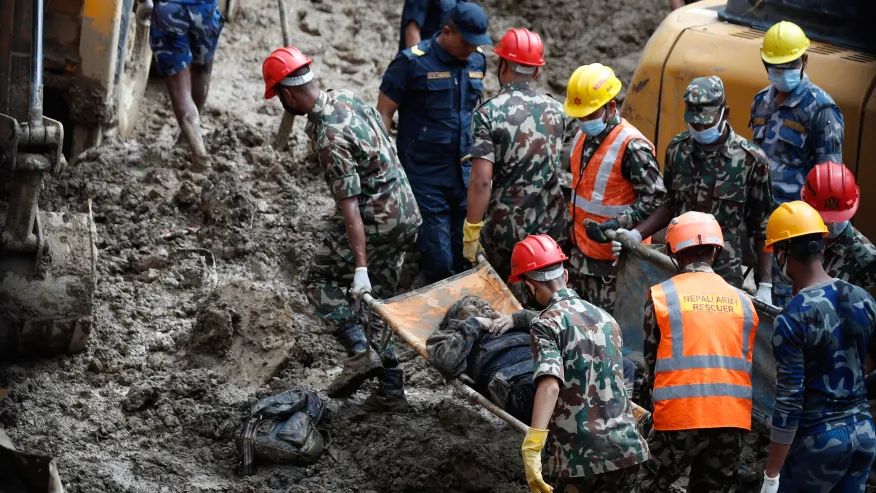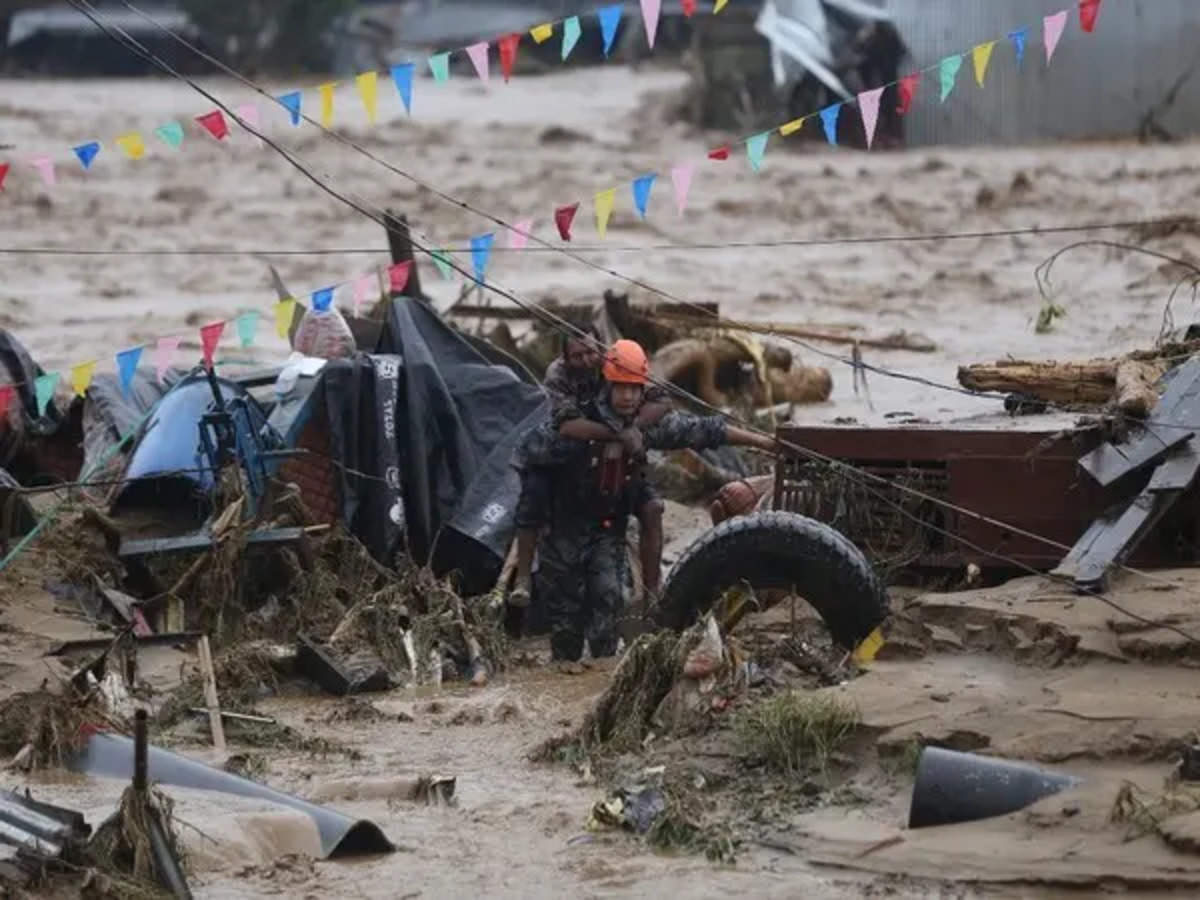Nepal has ordered the closure of schools for three days due to devastating floods and landslides caused by two days of intense rainfall. The disaster has left 151 people dead, with 56 others still missing. The Kathmandu valley, home to around 4 million residents and the nation’s capital has been severely impacted, with 37 fatalities recorded in this area alone.
Many schools and universities have suffered extensive damage, prompting the education ministry to halt classes to ensure the safety of students and staff. Despite the severity of the situation, there were signs of relief on Sunday as the rains began to ease.
The floods and landslides have crippled normal life in many regions, particularly in Kathmandu. Some parts of the capital received up to 322.2 mm (12.7 inches) of rain, causing the Bagmati River to rise dangerously, surpassing safe levels by 2.2 meters (7 feet).
Rescue operations have been challenging but are ongoing, with police teams retrieving bodies from two buses swept away by a massive landslide. The heavy rainfall has been attributed to a low-pressure system in the Bay of Bengal, which also affected parts of neighboring India.

Nepal Shuts Down Schools Amid Fatal Floods and Landslides, Leaving 151 Dead and Dozens Missing
Climate experts have highlighted how Nepal’s unplanned urbanization and poor infrastructure have worsened the disaster. The International Centre for Integrated Mountain Development (ICIMOD) has pointed to factors such as construction on floodplains, inadequate drainage systems, and settlements encroaching on riverbanks, particularly along the Bagmati River.
These factors, they argue, have made Kathmandu more vulnerable to climate-related disasters, exacerbating the impact of floods caused by heavy rainfall.
ICIMOD has called on the Nepali government to address these underlying issues by investing in better urban planning and infrastructure.
They recommend a combination of engineered solutions (“grey” infrastructure) like stormwater systems, as well as “green” or nature-based solutions to improve water management and drainage. Without urgent reforms, the risks of future climate disasters in the rapidly growing capital will continue to increase, according to the environmental body.
Elsewhere in the country, there are signs of improvement, especially in the southeastern region. The Koshi River, notorious for causing deadly floods, has started to recede after reaching levels nearly three times the normal height.
While the situation appears to be stabilizing, officials remain cautious as the river poses a threat to both Nepal and neighboring areas in India. Rescue operations continue, and authorities are focusing on preventing further loss of life and damage to infrastructure.











































